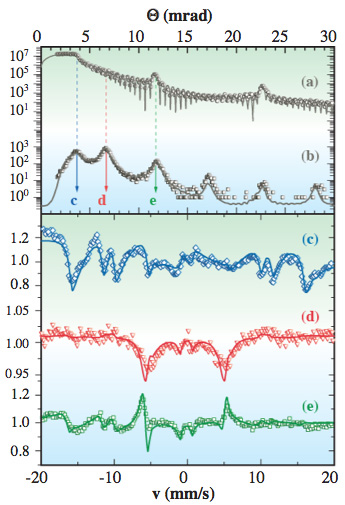Stroboscopically Detected Synchrotron Mössbauer Reflectometry
Inquiry number
SOL-0000000917
Beamline
BL09XU (HAXPES I)
Scientific keywords
| A. Sample category | inorganic material, research on method, instrumentation |
|---|---|
| B. Sample category (detail) | magnetic material, membrane |
| C. Technique | X-ray elastic scattering, nuclear excitation, Mössbauer effect |
| D. Technique (detail) | reflection, refraction, Mössbauer spectra |
| E. Particular condition | polarization (linear), interface, time-resolved (ns), room temperature |
| F. Photon energy | X-ray (4-40 keV) |
| G. Target information | chemical state, spin/magnetism |
Industrial keywords
| level 1---Application area | storage device |
|---|---|
| level 2---Target | HD,MO |
| level 3---Target (detail) | capacitance insulator, magnetic layer |
| level 4---Obtainable information | film thickness, surface,interface, interface magnetic structure |
| level 5---Technique | reflectometry |
Classification
A30.20 surface・interface, A80.14 magnetic materials, A80.40 environmental materials
Body text
Stroboscopic Detected Synchrotron Mössbauer Reflectometry (SDSMR) is a precise technique to study a distribution of the hyperfine interactions in the thin film or the multi-layer. The technique is applicable to the thin film or the multi-layer containing Mössbauer nuclei and provides knowledge about the distribution of the spin orientation, spin strength or the chemical states.
Figure. Prompt electronic (a) and delayed nuclear (b) reflectivity curves and SDSMR spectra (c)to(e) of [57Fe (2.6 nm) / Cr (1.3 nm)]20 at various angles indicated by arrows.
Source of the figure
Bulletin from SPring-8
Bulletin title
Research Frontiers 2003
Page
58
Technique
Source of the figure
No figure
Required time for experimental setup
8 hour(s)
Instruments
References
| Document name |
|---|
| Research Frontiers 2003, p58 |
Related experimental techniques
Questionnaire
The measurement was possible only in SPring-8. Impossible or very difficult in other facilities.
This solution is an application of a main instrument of the beamline.
Ease of measurement
Middle
Ease of analysis
With a great skill
How many shifts were needed for taking whole data in the figure?
Two-three shifts

